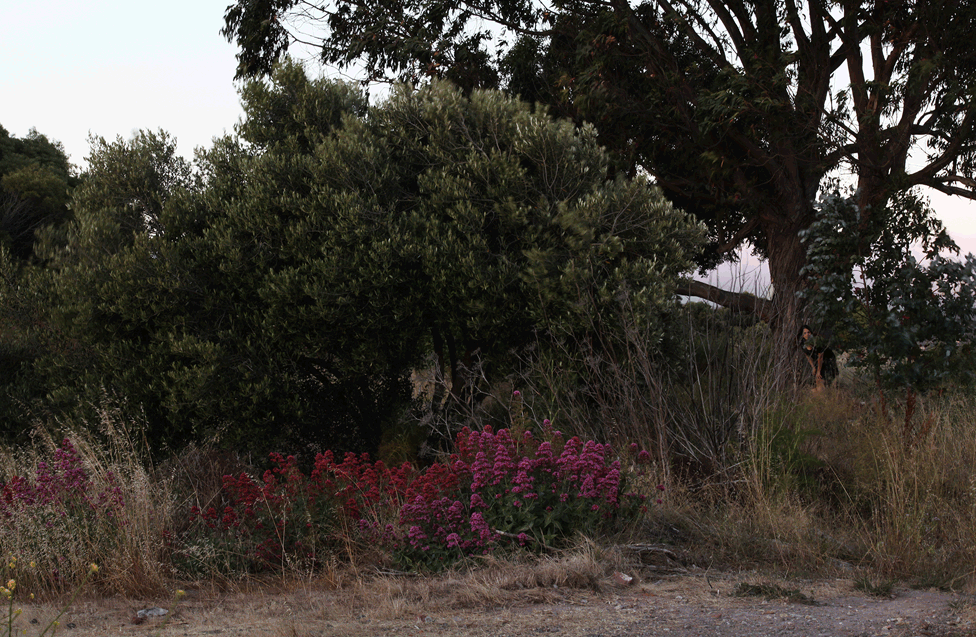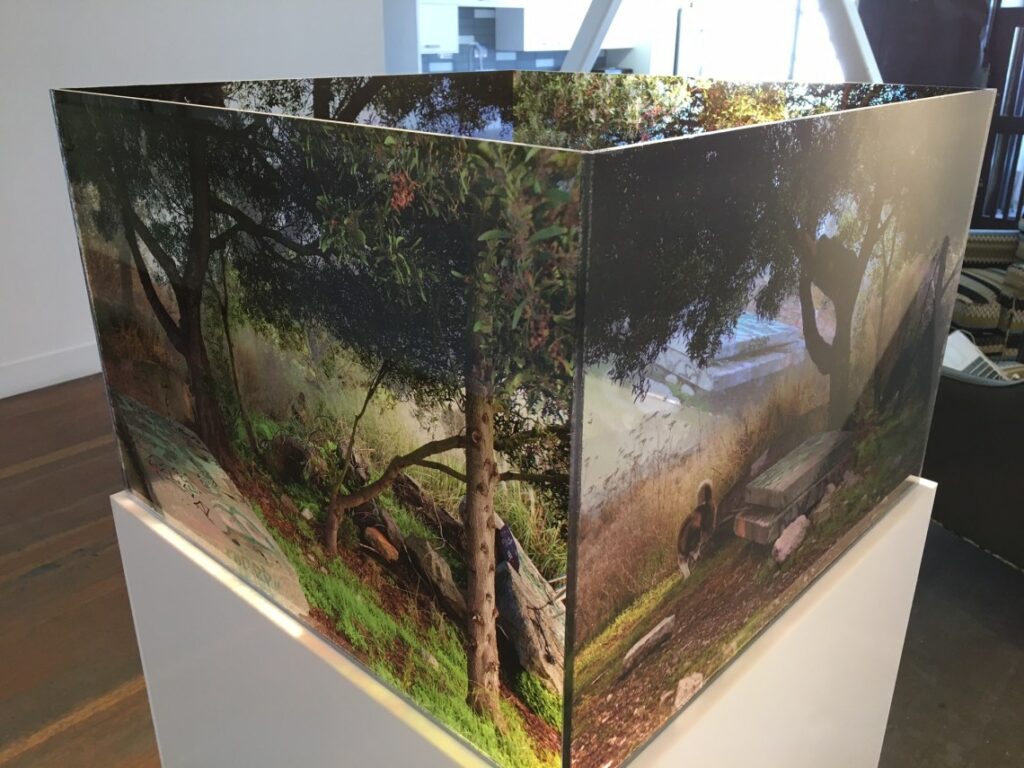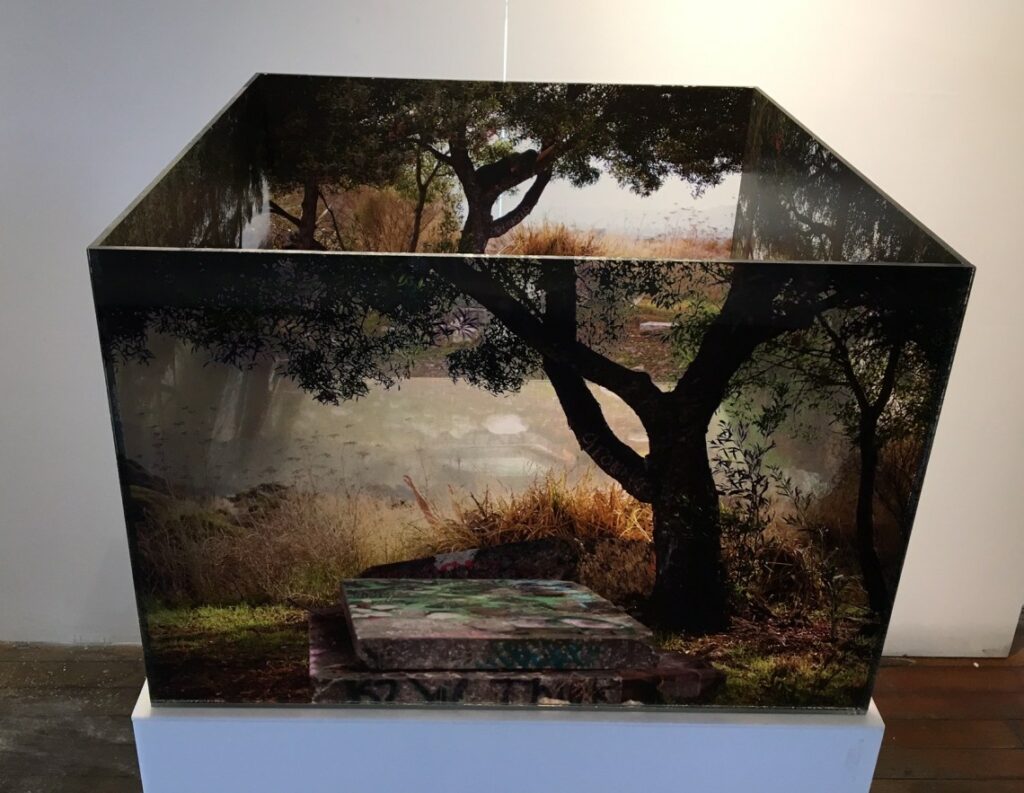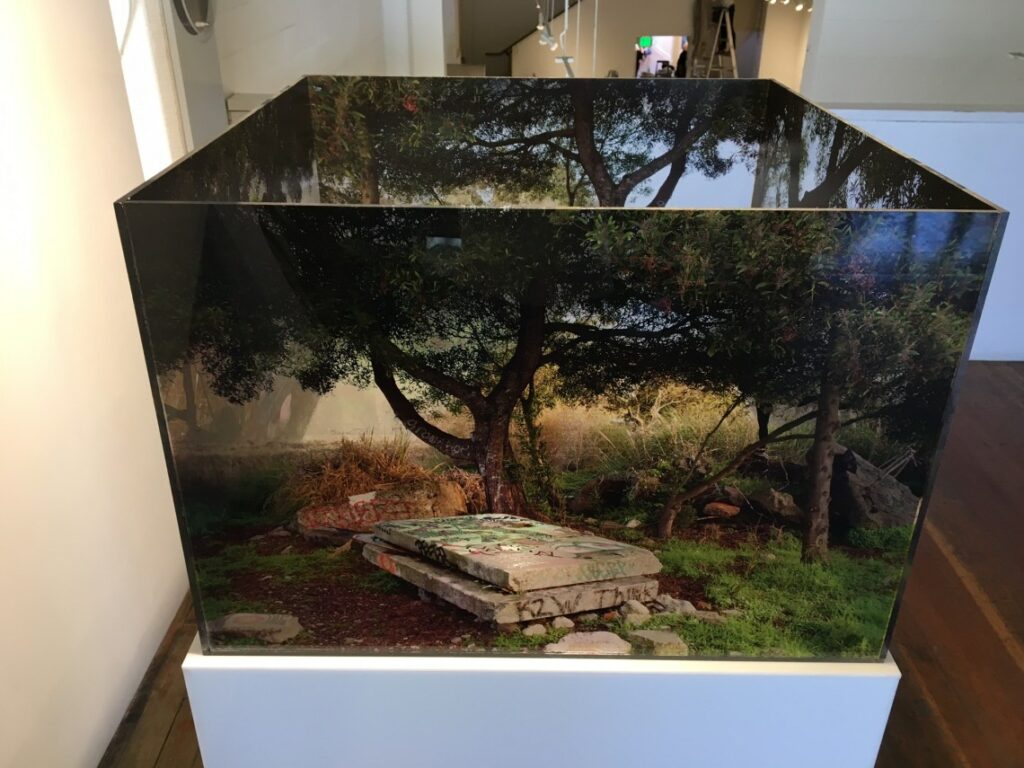
By repetitively visiting the same site, Natasha Carlos captures the infinite vantage points and perspectives of a singular landscape. Acting as a pseudo-explorer, Carlos inserts her own body into simultaneously specific and ambiguous outdoor environments.
For the month of July, Carlos has installed a stop-motion animation piece and photographic sculpture within the Frank Ratchye Project Space.
For Carlos, these unidentified sites operate as a sanctuary from the whirling pace of daily urban life. Through the process of layering within stop-motion animation combined with the presentation of photographs as a multi-dimensional sculpture, Carlos’ imagery encourages viewers to slow down their typical mode of looking to reconsider the multiple perspectives and vantage points of a particular place.
Exhibitions Fellow, Samantha Reynolds talks with Carlos about her “obsessive curiosity” to understand a site, her process of working with layers, and what she hopes to discover through continual documentation.

Samantha Reynolds: As a photographer, you characterize your process as an “obsessive curiosity” visiting the same site hundreds of times. What continues to interest you in understanding the different layers of a specific place?
Natasha Carlos: I’m driven by repetition. I’m interested in capturing my ongoing relationship to specific landscapes and the experience of visiting a particular place over time and seeing it from multiple perspectives. My work reflects the experience of the process itself.
SR: On some level, your process takes on a ritualistic characteristic through this continual repetition. Do you have a routine for when you photograph each site?
NC: Yes, definitely. The process of getting ready, driving to these locations, and starting my exploration is cathartic, because it is almost always the same. I shoot at a similar time of day and always wear the same outfit. There’s comfort in the ritual of repetition. All of these constants allow for the landscape to be a place of escape and visual exploration for me.
SR: Can you expand on this concept of constants within your landscapes? I think this is something that others typically view as something that is continually changing, rather than staying the same. How do these sites visually inspire you in ways that is different from an urban landscape?

NC: There are some concrete constants to my practice like road-tripping to each of these locations, having my dogs with me, and wearing the same velvet dress. There’s also an atmospheric almost emotional constant that comes over me when I return to a familiar location. It’s almost like déjà vu.
SR: How do these sites visually inspire you in a way that is different from urban landscapes?
NC: There is something timeless about being in nature that is impossible to experience in an urban environment.
SR: There is a mysticism present in your landscapes creating a feeling that it is both specific and nostalgic. Is this intentional?
NC: Yes, I use mirror, light, and layering to evoke the magic I feel while moving through these familiar locations from a new perspective.

SR: Your decision to present your photographic work as a dimensional, open cube offers different perspectives and narratives of your chosen site. When did you decide to make the jump to work three dimensionally? How this transformed your photographs?
NC: I was looking for a better way to reflect the layered, repetitive process through which I was making self-portraits at the time. Using multi-dimensional sculptures allowed me to introduce layering into my photography. This produces a more visceral experience for the viewer that forces them to move around them and experience the same landscape in different ways.
I began experimenting with printing my imagery on different materials during my MFA program and became fascinated with using clear acetate for prints. The transparency of the prints in sculptural form allowed for light to play a more vital role in the viewing experience. I was also considering why I was drawn to shooting the same location again and again. This shift in my practice pushed me to consider how materials, layering, and sculpture could bring life to my imagery.
SR: Although typically hidden or somewhat obscured, your body is always present. It creates a very different narrative if these sites were uninhabited. What role does your body play within these landscape and why is it important to?

NC: There are countless landscapes in art history that feature women as beautiful props in the foreground with nature serving as a mere backdrop. There is no real dialogue with the environment. Artists like Ana Mendieta and Judy Dater challenged that norm and prompted me to think of the role my own body plays in the landscape. My experience in it is immersive; and it is important that my work reflects the playful, exploratory relationship I have with nature.
SR: Exhibiting in relationship to your photographic sculpture, is a new stop-motion animation video piece. When did you first start experimenting with stop-motion animation? Did this feel like this was a natural next step for you?
NC: I started experimenting with stop motion when I was editing images from a site and having trouble picking just one still image. It occurred to me that I should just use them all together. Stop-motion came naturally because it is a great way for me to bridge my photographic process with fluidity of film.

SR: Exhibiting in relation to one another in the Project Space, the stop-motion video and photographic sculpture create an enticing juxtaposition. Have you exhibited these pieces together before? It seems as if the layering process of each has taken on a more significant role.
NC: I think the stop motion helps bring to life the figure that is present in the sculpture. It’s almost like a clue for the viewer to check back in with the sculpture and look for the presence of the figure.
SR: One of my favorite aspects of your work is it draws me in to search for details and subtle differences – it slows down my process of looking to make it much more intentional. Is this an aspect of your work others have remarked on? Are there other takeaways from viewers that you hope will come from this specific exhibition?
NC: Yes, I’m definitely trying to slow down the viewing process by showing slight shifts in perspective, as well as with layering and use of light. I want to share how I interact with specific places and challenge the viewer to consider their own interactions with environments they revisit.
Natasha Carlos: Reawakening is on view in the Frank Ratchye Project Space through July 29, 2017.
